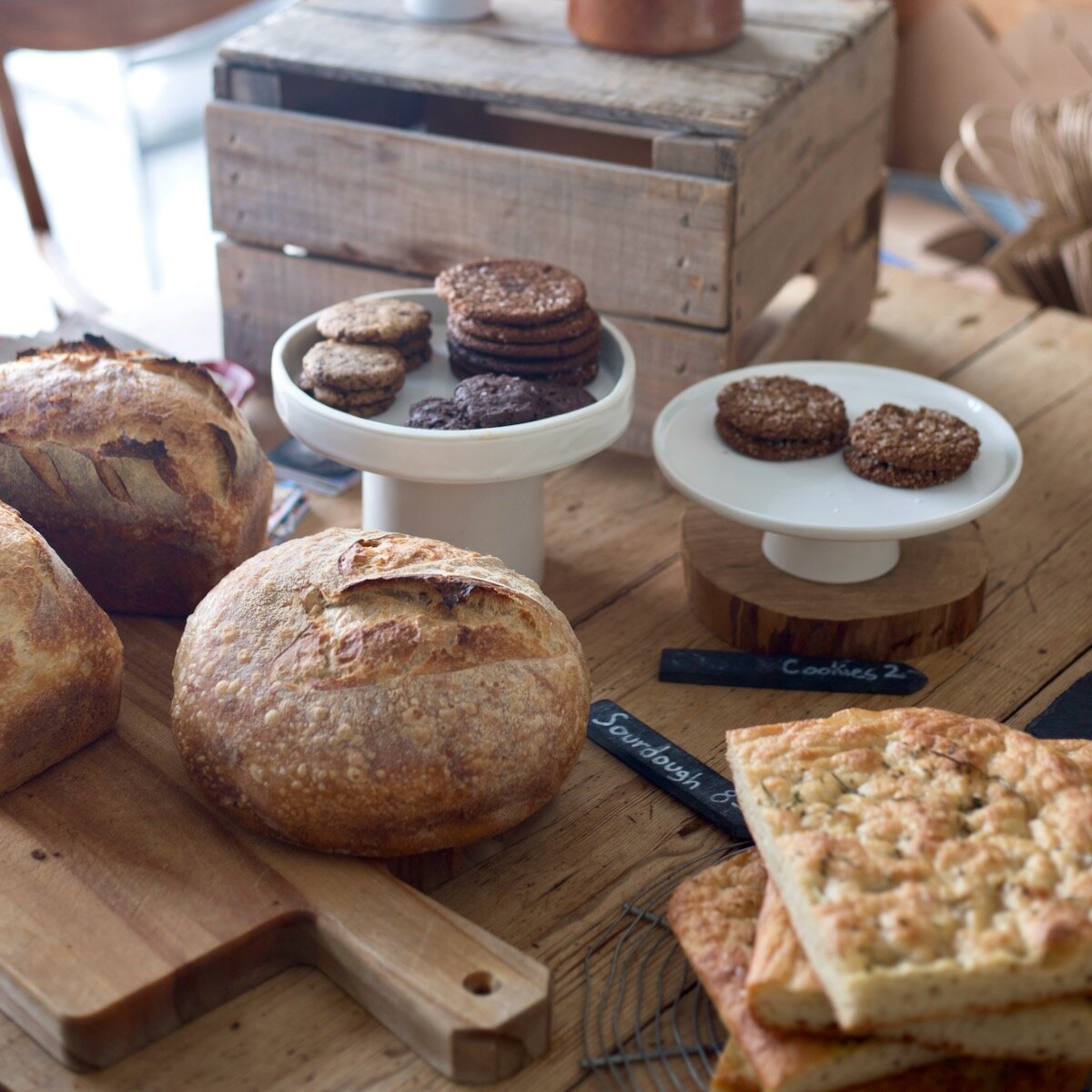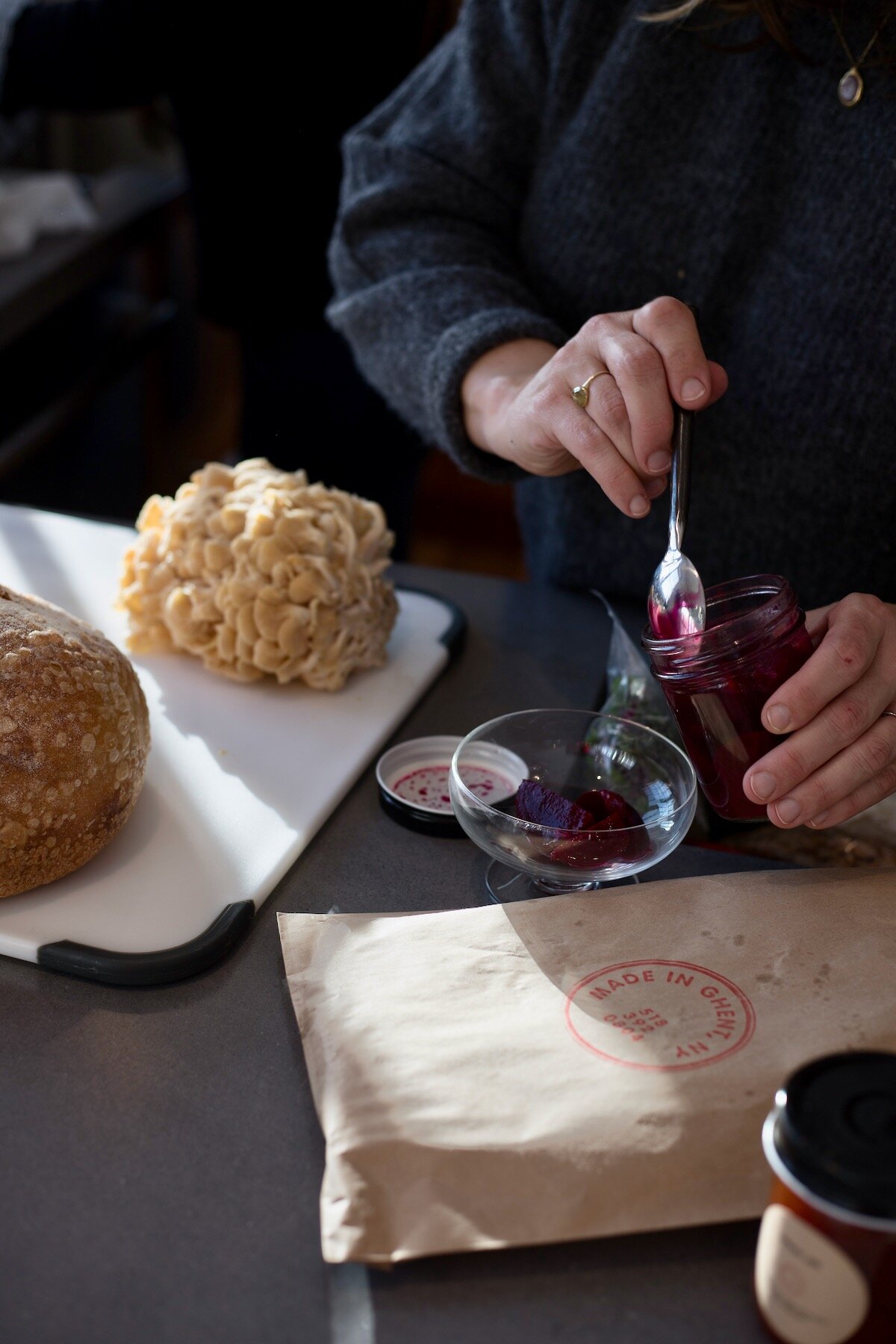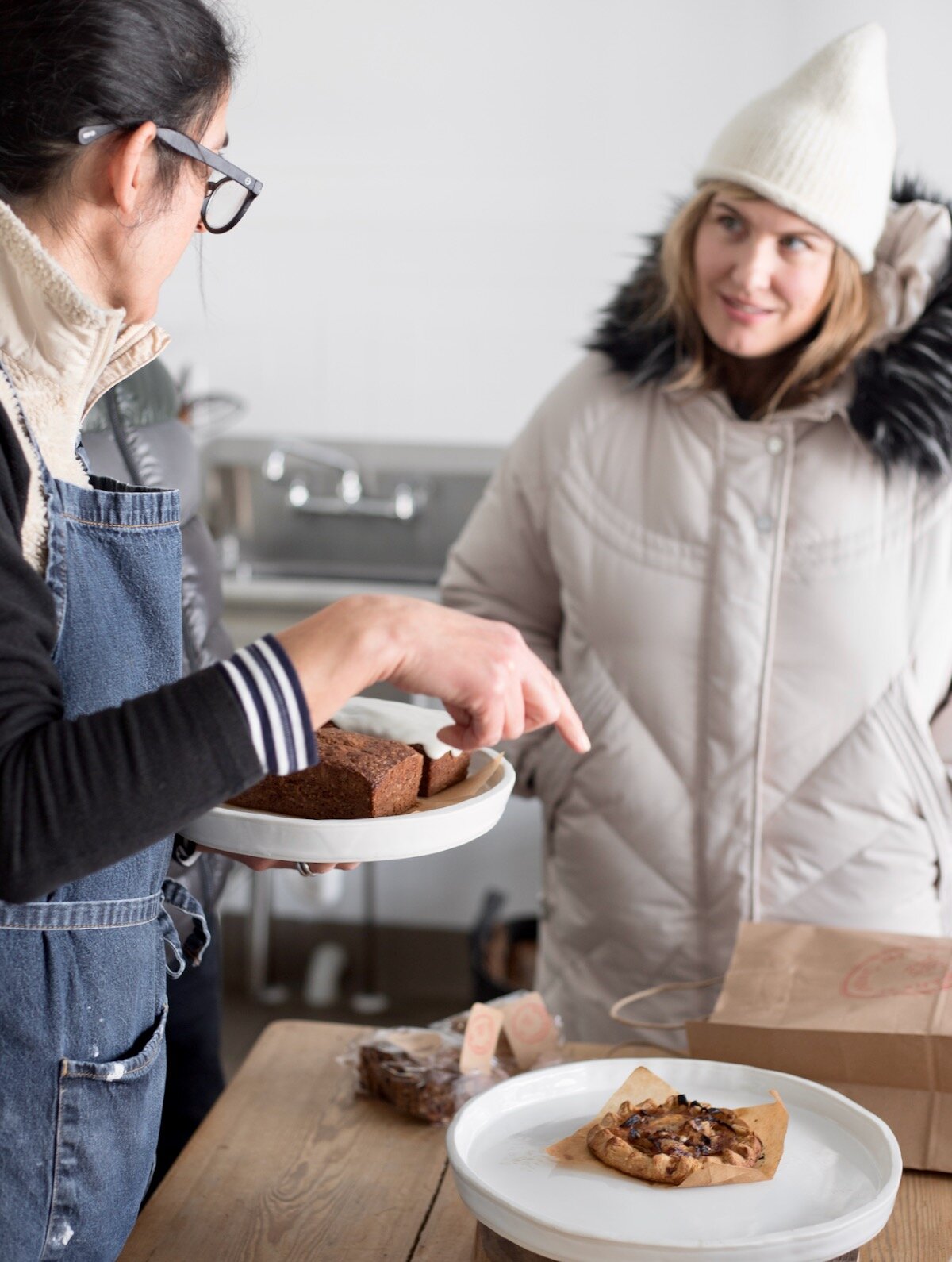At the start of the Coronavirus public health crisis, Julie Wallach, an ex-restauranteur and a brilliant chef, went into organization overdrive. With years of experience in the restaurant industry as the owner and executive chef at Tipsy Parson and Little Giant, Julie was uniquely prepared to handle her culinary needs despite the uncertainty of the times.
Based out of the Hudson Valley with her husband Ben, Julie has pivoted her grocery shopping and food consumption to balance important factors of convenience, environmental impact, and health and sanitary concerns. Here, Julie shares with us some of her tips for maximizing your grocery trips, organizing your pantry essentials, creating community through resource-sharing, and the keys to a more intentional and low-waste approach to food consumerism.
Where are you getting your groceries, pantry essentials, and meals these days? What services have you found essential?
I limit my shopping trips to once a week, maybe once every 10-12 days. I’m loyal to a family-run grocer in the Hudson Valley called Adams Fairacre Farms. They started off 100 years ago in Poughkeepsie as a produce stand and have expanded to locations in Kingston, Newburgh and Wappinger’s Falls. They have a great flower/plant nursery, so I’ll walk the nursery lot, thinking of a simpler time; it’s an escape of sorts.
I buy my pantry essentials once a month via Chef’s Warehouse, the restaurant distributor that since shutdown has pivoted to home delivery, and I’m currently excited about Ulster County farmstands that are opening and are stocked with seasonal produce.
We haven’t participated in the local takeout options because we like to cook and we’re trying to conserve resources, however, we’ve seen some local restaurants are doing an amazing job adapting to the times - Kingston Bread + Bar, Lola’s Pizza, and Village Coffee & Goods are killing it with their creative offerings.
What does it mean to you to ‘shop like a chef’? How can that mindset relate to the everyday household and food shopping during a global pandemic?
To me, shopping like a chef means making the most out of the least. How can you stretch an ingredient to maximize flavor and profit? To me, the most important elements of the chef mentality that can be applied at home are preparation and planning.
Chefs are taught the importance of ‘mise en place’ early on in their training. It means “everything in its place.” You don’t start a recipe unless you have all your ingredients prepped and ready. No chopping as you go. No messy workstations. This keeps you on track, sets you up for success, and ultimately saves time.
Here are a few tips I would offer based on my experience:
I do a big food prep day each time I shop. I wash and trim my veggies and store them in the fridge so I can easily assemble a salad or meal without having to start from scratch.
Learn to roast a chicken. It’s simplicity is perfection and it will be a foundation on which to try more elaborate chicken dishes. And, make sure to save the carcass in a freezer bag. When you accumulate 3-4, make stock and freeze it to add depth to future dishes.
Buy sturdy veggies (carrots, cabbage, kale).
Build on your pantry staples: flour, yeast, eggs (not just for breakfast), oats, dried fruits and nuts, lemons, beans - canned or dried, canned San Marzano tomatoes, and pasta.
Consider comforting and easy to replicate items that could be cheaper if made at home, such as granola. This is a great way to use up bulk oats, seeds, and nuts.
How do you balance bulk buying (of household goods, sanitation products, and of course, pantry staples) with small-batch consumption from local farms, grocers, and producers?
I have a well-stocked pantry - so I’m usually headed to the grocer or farmstand for the “jewelry” of the meal. If the cauliflower looks amazing, I’ll grab a head, knowing I have the balance of the meal components in the pantry.
Since my husband and I are from a restaurant background, we’re used to buying in bulk and breaking it down into manageable quantities. A tip - buying multi-use and typically expensive items like almonds in bulk can save you plenty of money, especially if stored correctly.
With almonds, I’ll make a large batch of pesto which we store in the freezer, as well as home-made almond flour (frozen for maximum freshness), and vacuum-sealed spiced/candied almonds for snacking. So, that 5-pound bag of almonds is now repurposed into a multitude of different pantry items with only a little bit of work. You’re buying fewer packaged items, which translates to less trash and less food to clean.
What systems would you recommend for bulk buying that is applicable to those with fewer storage solutions, smaller family units, etc?
I would definitely recommend that you decant all your pantry items into clear glass or plastic containers. This means I don’t have to worry about washing off packages (just wash your hands after you decant).
Label them. Label them. Label them. I use a P-Touch or Dyna-Label, but masking/painters tape are perfectly sufficient as well. I usually write the purchase date on a small piece of painter’s tape and place it on the bottom of the container.
For people living in smaller quarters, I would also recommend starting a Food Barter with friends. This is a great way to utilize all the items you buy in bulk, and prevents spoiling for improper storage of excess produce and pantry items.
Lastly, simplify your pantry. Do you really need those 12 bottles of olive oil? Six types of nuts? Pick your favorites and use them until they are gone - then buy something new!
Which lessons in intentioned consumption do you wish to take forward post-COVID?
Shop smart, and reduce waste. Food waste is such a huge issue globally, but especially in the US. Pre-COVID, everything was available to consumers, if they could afford it. Convenience often triumphed over quality.
I see friends who now have time to learn new cooking skills and teach their kids to cook - whereas, before COVID, they’d get takeout or rely on prepared foods because they were always on the run. Teaching children how to cook is so important. Not only does it provide nourishment, but it’s a way to express creativity, learn about finances, and healthy eating habits.
I’m also trying to learn to live with less. I’m hoping that this time in shutdown will help people become more self-sufficient and understand their role in the food supply chain.
**All original photography taken prior to the arrival of COVID-19.













